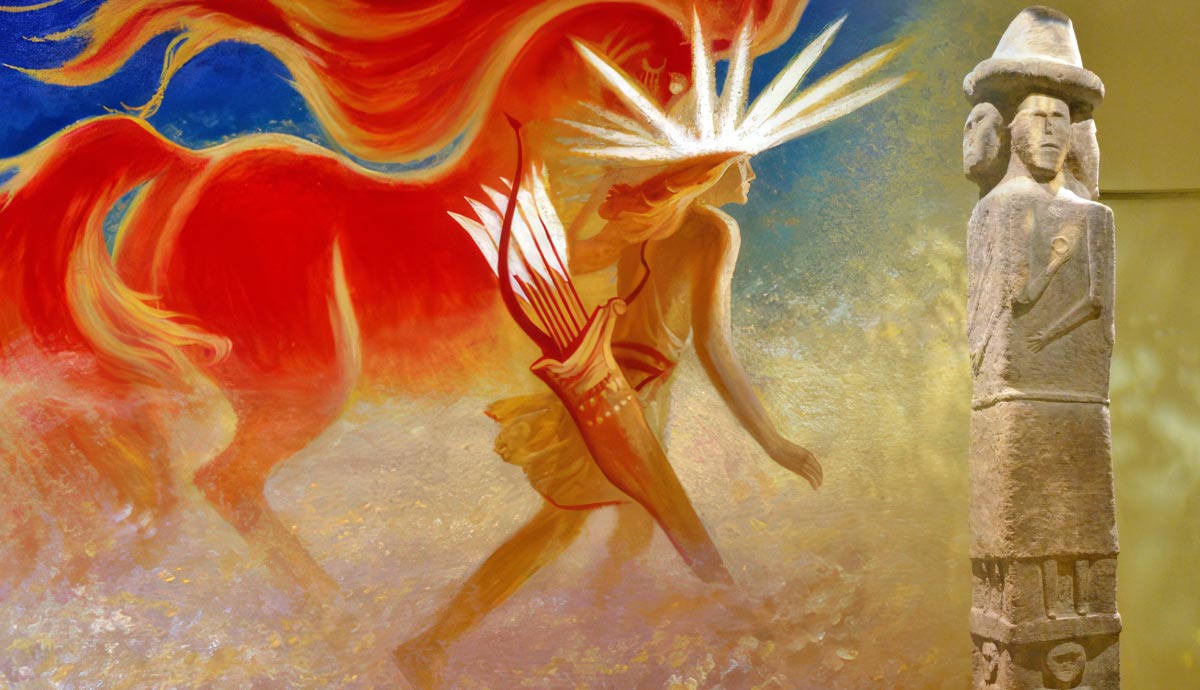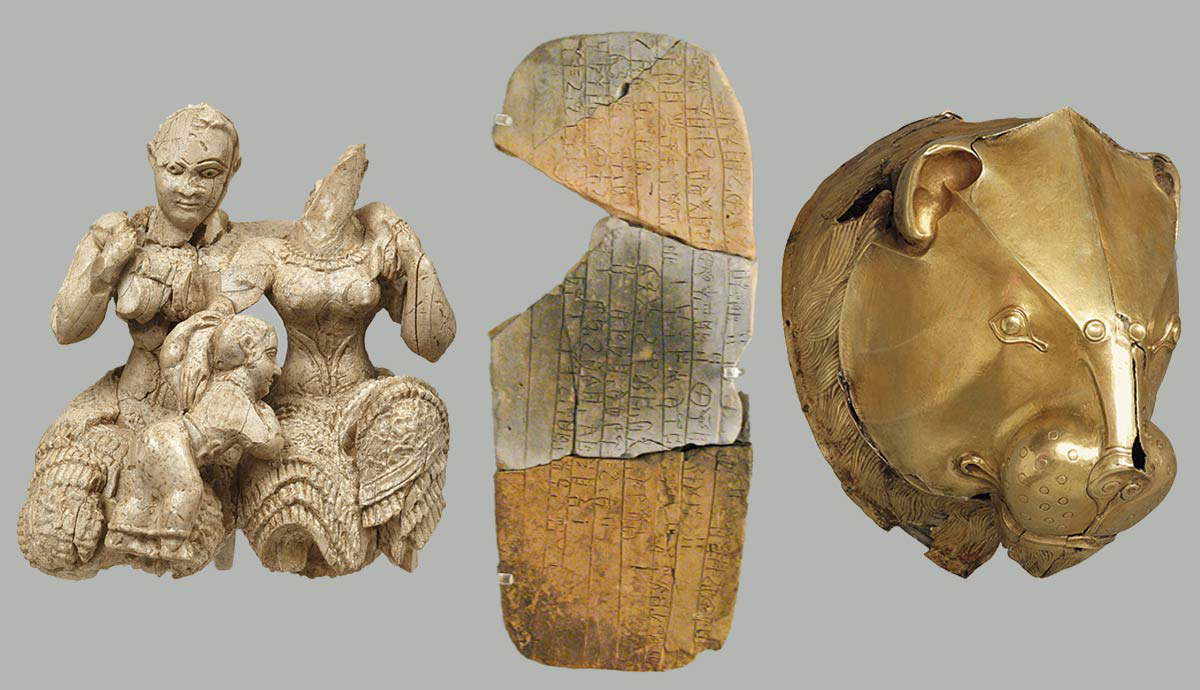
Perun was the most important Slavic deity in pre-Christian times and was considered the ruler of both the mortal realm and the heavens. He protected them from chaotic deities that often took the form of snakes. Perun was a god of thunder and lightning associated with the weather and fertility, and he was also a god of war and protection.
Perun wielded an axe called “Mjolnir” and was an important deity for the Viking-related, Slavic Kievan Rus. Despite the obvious parallels with Thor, the Norse god of thunder, Perun seems to have been an important Slavic deity before the Vikings started to settle in the area.
1. Perun is an Ancient Slavic Deity

While Perun bears many similarities to Thor, the Norse god of thunder, he was worshiped among the Slavs before the Vikings began to move into the area. Of course, his later characterization was probably influenced by Norse ideas.
The 6th-century Eastern Roman historian Procopius tells us that the Slavs worshiped one god above all others, a creator of lightning who was the lord of all and who received sacrifices of oxen and other animals. While he does not specifically name the god, it must be Perun.
Perun was the supreme god worshiped by the Kievan Rus in the 9th and 10th centuries. Through them, Perun may have evolved Norse characteristics.
According to 12th-century chronicles, in 980, Prince Vladimir the Great of Kyiv erected five statues of pagan gods in front of his palace. Perun was chief among them, depicted with silver hair and a golden mustache. The statues were torn down less than a decade later when Vladimir converted to Christianity and forced much of the population to be baptized.
Vladamir’s uncle Dobrynya, who ruled at Novgorod, also erected a shrine to Perun. It was later converted into a monastery but was still named for the pagan god.

According to the Saxon historian Helmold, writing in the 12th century, the Slavic tribes believed in various gods, but they all believed that one supreme god stood above them all. While Helmold does not give the name of the god, again, this must be Perun.
In addition to Thor, the Norse god of thunder, Perun is closely related to many other gods of lightning and thunder worshiped in the region, including Perkunas in Baltic and Lithuanian mythology and the Finnish god Ukko. Much of what we know about the Slavic Perun comes from comparative studies and more modern folktales, especially from Russian sources.
These do suggest that Slavic culture conceptualized the universe as sitting around a mighty world tree, similar to Yggdrasil in Norse mythology. The world of men exists around the trunk of the tree and the world of the gods in its branches. The underworld sits among the roots. Perun is sometimes described as an eagle sitting at the top of the tree.
2. Perun Was Kidnapped as a Baby

One Russian folktale may tell the story of the origins of Perun. It suggests that he is the son of the goddess Lada, a goddess of beauty and fertility, and the god Svarog, a sky god. But his birth was only possible after Lada ate a pike fish containing the embodiment of Ron, a mysterious creator god.
There seems to have been some kind of prophecy about the son of Svarog being extremely powerful and capable of defeating the serpents that live in the underworld. In response, one powerful serpent came up from the underworld and kidnapped the newborn Perun and his three sisters. He placed Perun in a secret dungeon and took the three girls to his home in the underworld.
It took 300 years, but Lada eventually discovered where her son was imprisoned. He seems to have been in a deep sleep as she had to use the liquid obtained from a Gamayun bird—a mythical bird with prophetic abilities—to awaken her son. Despite sleeping for the first 300 years of his life, Perun seems to have been a fully developed man, and vowed revenge.

To make his way into the underworld and confront the serpent, like Hercules, Perun had to overcome a series of challenges.
He first came to a dense forest with roots so thick that it was impassable. But Perun threatened to turn the forest to splinters and the roots parted. He then came to a fiercely strong river that could sweep a man to his death. He ordered the river to part so that he could cross. Finally, he came to an expanse of hills that blocked his path, which also parted at his command.
When he reaches the home of the serpent, he is greeted by a fire-breathing bird, which he must kill with his bow and arrow before entering the house made of the bones of the serpent’s victims. Inside he finds his three sisters, who have become beastly with pale skin and straggly hair. He tells them to go to the Riphean Mountains and bathe in the waters of the dairy river and sour cream lake to restore themselves.
Soon Perun encounters the serpent. He does not recognize Perun but engulfs the intruder in flame. He is surprised when this does not kill Perun. A mighty battle ensues between the two and lasts several days, but the serpent is not worried since he believes that only the son of Svarog has the power to kill him, and he is safely imprisoned.
Perun reveals his identity just before striking the killing bow. He then uses the body of the serpent to create the Caucasus Mountains, which he uses as a path to return to heaven and take up his position as ruler of the gods.
3. Perun Battled the Serpent Veles

Despite the serpent in Perun’s kidnapping myth being described as menacing, the Slavs did not believe that the serpents of the underworld were evil. They brought essential balance to the world. The ruling serpent of the underworld was Veles, who was also responsible for showing the dead across the fields to the meadows of the beyond.
But every year, Veles tries to make his way up into the mortal realm. It is unclear whether he was actively challenging Perun or just instinctively seeking a brighter world. In either case, his presence seems to dry out the lands.
Each year, Perun must eventually battle with Veles and drive him back into the underworld. It is these battles that cause lightning and thunder. As Veles is driven back, the moisture that Veles has taken falls back into the world as rain, initiating a period of growth and fertility.
4. Perun Carries Many Weapons

While Perun was principally a fertility deity, he was also considered a god of war and his favor could change the course of battles. As a warrior, he had more fun weapons than most modern superheroes.
Perun’s thunder-causing lightning bolts were rocks and stone arrows. The Slavs believed that fulgurites—clumps of soil, sand, and earth that have been fused by lightning—were remains of the god’s weapons. Old stone tools were also thought to be left behind by Perun, and it was thought that they could protect against bad luck, evil magic, and disease.
Perun also had a “super lightning bomb,” which was a golden apple that could be thrown and kill hundreds of people at a time. One folk song from Montenegro describes Perun throwing three golden apples at a wedding party, first killing the bride and groom, then the priest, and finally all the 600 guests. No one was left alive to tell the tale.
Perun was also often shown in a chariot, drawn by horses or goats, just like Thor and he had an axe, which was called Mjolnir, the same hammer Thor carries. Examples of axe pendants survive from the 11th and 12th centuries, and it is believed that they may have been worn as symbols of protection, in the same way that the Vikings wore Thor’s hammer pendants.
5. Perun Consecrated Oaths

Another very important aspect of Perun in Slavic culture was his consecration of oaths.
According to records, in 907, Prince Oleg of the Kievan Rus made a treaty with the Byzantine ruler. To seal the treaty, his men went to the shrines of Perun where they swore on their weapons and Perun. The same process was followed by Prince Igor in 945. The formula seems to have involved asking Perun to strike them down with their own weapons if they broke their oaths.
The shrines of Perun were usually on the tops of mountains or hills, or in oak groves, as oaks were sacred to Perun, and the world tree was believed to be an oak tree. The remains of one Perun shrine near Novgorod has been excavated and it appears to be a circular platform built around a statue, presumably of Perun. It was encircled by eight apses, which may have contained altars or statues. This confirms an association between Perun and the number nine, which was considered sacred in both Slavic and Norse mythology.

Perun was associated with a symbol known as a perunika or gromovnik, which looks a lot like the wheel of a chariot. Interestingly, astrological books in circulation in Russia and Serbia in the 15th and 16th centuries were also called gromovniks. They contain records of the state of the weather, the position of the moon, and the appearance of thunder in each of the lunar months. Based on this, the books made predictions about natural disasters, crop yields, and even animal and human behavior.
This type of fortune-telling seems to have been extremely popular and suggests that Perun continued to be important among the Slavs well after the widespread conversion to Christianity.










